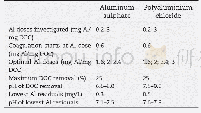《Table 1Correlation and comparison of CPS and DTs.》
As shown in Table 1,CPS and DTs were proposed around the same time.However,the DT did not receive much attention until2012,when NASA and the US Air Force began to use the DT concept.In contrast,since being proposed by Gill,CPS received attention from academia and governments,with Industry 4.0listing CPS as its core.Nevertheless,after several years of development,DTs became popular.In comparison,CPS are more akin to a scientific category,whereas DTs are akin to an engineering category.In composition,both CPS and DTs involve the physical world and the cyber world.Through cyber–physical interaction and control,both enable precise and better management and operation of the physical world.However,with respect to the cyber world,CPS and DTs have their respective emphases:DTs focus more on virtual models,which enable the one-to-one correspondence in a DT,while CPS emphasize 3C capabilities,which lead to one-to-many correspondence.In terms of function implementation of CPS and DTs,sensors and actuators enable the interaction between the physical and cyber worlds for data and control exchange.By comparison,models play an important role in a DT to help interpret and predict the behavior of the physical world based on various data.Thus,sensors and actuators can be considered as the core elements in CPS,while models and data are the core elements in a DT.From the perspective of hierarchy,both can be divided into the unit level,system level,and SoS level.However,given that they have differentelementary emphases,CPS and DTs have different components on each level.Finally,through integration with new IT,CPS and DTs can enhance the capabilities of manufacturing systems by offering optimized solutions,which contribute to the implementation of smart manufacturing.
| 图表编号 | XD001941600 严禁用于非法目的 |
|---|---|
| 绘制时间 | 2019.08.01 |
| 作者 | 陶飞、戚庆林、王力翚、A.Y.C.Nee |
| 绘制单位 | School of Automation Science and Electrical Engineering, Beihang University、School of Automation Science and Electrical Engineering, Beihang University、Department of Production Engineering, KTH Royal Institute of Technology、Department of Mechanical Engine |
| 更多格式 | 高清、无水印(增值服务) |
查看“Table 1Correlation and comparison of CPS and DTs.”的人还看了
-

- Table 3:Comparison of previous reports and the present study on frequency and distribution of decremental responses in p
-

- Table 2:Comparison of the Connotations and Characteristics between Industrialization and Ecologicalization
 提示:宽带有限、当前游客访问压缩模式
提示:宽带有限、当前游客访问压缩模式





